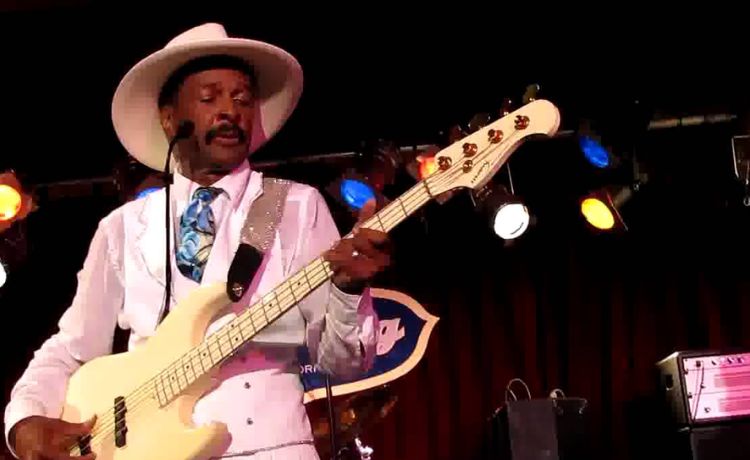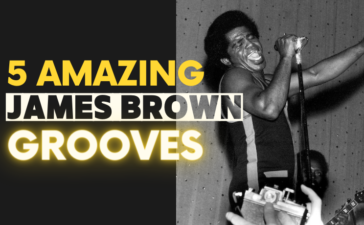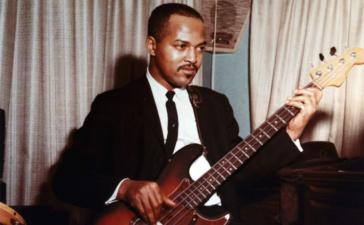Larry Graham, born on August 14, 1946, in Beaumont, Texas, is one of the most influential bassists in music history. Known for his pioneering slap bass technique, Graham redefined the role of the bass guitar in funk, soul, and R&B. His innovative approach has left an indelible mark on bass playing, influencing countless musicians across genres. From his early days in Sly and the Family Stone to his groundbreaking work with Graham Central Station and collaborations with Prince, Larry Graham’s career is a testament to his creativity, talent, and enduring influence.
Early Life and Musical Beginnings
Larry Graham was raised in Oakland, California, in a musical family. His mother, Dell Graham, was a professional pianist, and she introduced him to music at an early age. Larry initially started on the guitar and piano but eventually moved to the bass guitar as his primary instrument. In his youth, he honed his skills by playing in his mother’s bands, as well as in local groups around the Bay Area.
Graham’s introduction to bass came out of necessity. When his mother’s band lost their drummer, Graham began using his bass to mimic both the rhythm and melody, developing a unique technique that combined fingerpicking with slapping and popping. This method allowed him to fill the rhythmic gap and simultaneously drive the harmony, laying the foundation for what would become the iconic slap bass style.
Sly and the Family Stone: A Funk Revolution
Larry Graham’s big break came in 1967 when he joined Sly and the Family Stone, a pioneering funk and psychedelic rock band led by singer, producer, and multi-instrumentalist Sly Stone. With Graham on bass, Sly and the Family Stone became one of the most innovative and successful bands of the late 1960s and early 1970s.
The band’s signature sound, blending funk, rock, soul, and psychedelic music, was underpinned by Graham’s groundbreaking bass playing. His slap bass technique — which involves thumbing the low strings for percussive effect and popping the high strings for sharp, melodic notes — became a defining feature of the band’s music. Tracks like “Thank You (Falettinme Be Mice Elf Agin)” and “Dance to the Music” feature some of Graham’s most iconic bass lines, characterized by their rhythmic intensity, groove, and infectious energy.
Graham’s contribution to Sly and the Family Stone was pivotal in shaping the sound of funk. The slap bass technique added a new rhythmic dimension to the music, making the bass guitar a lead instrument in the groove and laying the foundation for funk as a genre. His work with the band helped propel funk into mainstream music, influencing not just bassists but entire bands and genres.
Graham Central Station: A Funk Legacy
In 1972, Larry Graham left Sly and the Family Stone due to creative and personal differences within the band. Following his departure, he formed Graham Central Station, a funk band that allowed him to explore his musical vision as a frontman, bassist, and songwriter. Named after New York City’s Grand Central Terminal, the band became a vehicle for Graham to expand on the sound he helped create with Sly and the Family Stone.
Graham Central Station was known for its high-energy performances, tight musicianship, and, of course, Larry Graham’s signature slap bass playing. The band’s self-titled debut album, released in 1974, featured hits like “Can You Handle It?” and “Hair,” which showcased Graham’s ability to blend hard-hitting funk with melodic songwriting and positive messages.
Over the next few years, Graham Central Station released a series of successful albums, including Release Yourself (1974) and Ain’t No ’Bout-A-Doubt It (1975), the latter of which included the hit “Your Love.” The band’s music was a mix of funk, soul, and gospel influences, and their energetic live shows became legendary. Graham’s charisma as a bandleader and his groundbreaking bass work helped solidify the band’s place in funk history.
Solo Career and Gospel Influence
In the early 1980s, Larry Graham embarked on a solo career, further exploring his gospel roots and blending them with his funk background. His first solo album, One in a Million You (1980), produced a major hit with the title track, a smooth R&B ballad that showcased Graham’s rich baritone voice. The song reached No. 9 on the Billboard Hot 100 and solidified his place not just as a bassist but as a vocalist and solo artist.
Graham’s solo work often reflected his spirituality, particularly his conversion to the Jehovah’s Witness faith in the late 1970s. His gospel influence became more prominent in his music as his career progressed, with many of his songs carrying messages of love, faith, and positivity.
Collaboration with Prince
One of the most significant chapters in Larry Graham’s later career was his close collaboration with Prince. Prince, a longtime admirer of Graham’s work, considered him one of his biggest influences, particularly his slap bass technique. The two artists shared a deep mutual respect, and their partnership became one of the most iconic in the world of funk and R&B.
In the early 1990s, Graham began touring with Prince and played a key role in introducing Prince to the Jehovah’s Witness faith. Graham became a mentor and collaborator, performing with Prince on stage and in the studio. Their performances together were a dynamic blend of Prince’s eclectic style and Graham’s deep funk grooves. Graham even played bass on several tracks for Prince, and his influence could be felt in the Minneapolis sound that Prince pioneered.
Their friendship lasted until Prince’s passing in 2016, and Graham often spoke about the deep bond they shared, both musically and spiritually.
Legacy and Influence
Larry Graham’s impact on music, particularly on the role of the bass guitar, cannot be overstated. As the inventor of the slap bass technique, Graham revolutionized the way bassists approached the instrument. His innovative style redefined the bass as a rhythmic and melodic force, making it a lead instrument in funk, R&B, and beyond.
His influence extends far beyond the realm of funk, with bassists across genres — from jazz to rock to hip-hop — citing Graham as a major inspiration. Artists such as Bootsy Collins, Stanley Clarke, Flea of the Red Hot Chili Peppers, and Victor Wooten have all acknowledged Larry Graham’s profound impact on their playing. The slap bass technique he pioneered remains a staple in modern bass playing, and his work continues to inspire new generations of musicians.
Personal Life and Continuing Career
Larry Graham remains active in music, performing live and continuing to release music with Graham Central Station and as a solo artist. His personal faith and spirituality play a significant role in his life, and he continues to be a prominent figure in the Jehovah’s Witness community.
Though his career spans over five decades, Graham’s energy, enthusiasm, and love for music have never waned. He continues to tour, bringing his signature sound and positive message to fans around the world. As one of the true pioneers of funk, Larry Graham’s legacy is secure, and his influence will undoubtedly continue for generations to come.
Conclusion
Larry Graham’s contributions to music, particularly through his innovation of the slap bass technique, have cemented his place as one of the greatest bassists of all time. From his early days with Sly and the Family Stone to his groundbreaking work with Graham Central Station and collaborations with artists like Prince, Graham’s career is a testament to his creativity, innovation, and lasting influence on the world of music. His role in shaping the sound of funk and R&B, as well as his influence on bassists across genres, ensures that Larry Graham’s legacy will endure for generations.









